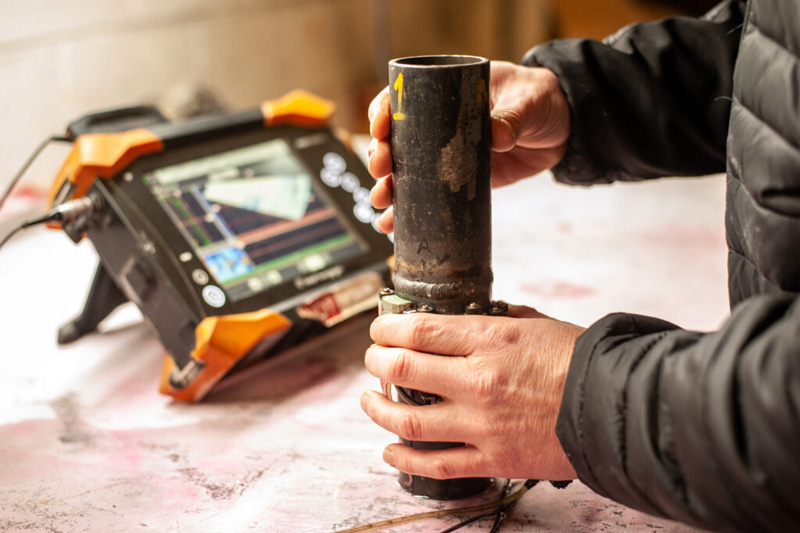A lot of our services have acronyms. It can be quite confusing for clients who are unfamiliar with the terminology. UT, ToFD, PAUT, MPI, it can be difficult to keep track of what all the terms mean.
Two of the most used terms within the non destructive testing industry are UT and PAUT. So, what are they and how are they different? We’ll dive into these two important NDT inspection services to make things a bit clearer.
What is UT?
UT, or ultrasonic testing, is a type of non-destructive testing that is used to assess the structural integrity of materials and equipment.
A probe is applied to the surface of the material/component that is being tested and ultrasonic waves sent out and returned. The reading is then viewed on a visual display. Holes, thin spots, corrosion, cracks, and flaws can be identified and repairs undertaken if necessary. UT can also be used to measure material thickness.

Areas of components such as welds and joints are weak points that need particular attention, and UT is often used after welding has taken place to ensure that the welds are sound.
UT can be used on a range of materials, including concrete and composite materials, but it is mainly used on metal and alloys.
What is PAUT?
PAUT, or Phased Array Ultrasonic Testing is a form of non destructive testing used in industrial and medical settings. It uses ultrasonic waves to assess the structural integrity of assets.

A PAUT probe consists of many small transducers that are controlled by a computer. These transducers fire ultrasonic waves, the reading that bounces back helps the computer map the structure of the material being assessed. It can detect flaws, cracks, pits, holes, thickness and corrosion. The computer builds a picture of the material from the returned waves, and a digital record is stored in the computer. The technician can then review the images and any defects can be repaired, or the component replaced.
Phased Array UT can be used on a range of materials, including composite materials and concrete, but it is mainly used on metal and alloys.
What is the difference between them?
The probes used for Ultrasonic Testing has one directional beam. The technician has to angle the probe, sweeping the beam across the material to make the inspection.
PAUT is different. The ultrasonic waves are swept by the probe itself. This is because the probe is made up of multiple small elements that can be controlled individually by a computer. The “array” of probes can be timed or “phased”, hence the name “phased array”. This makes the probe omnidirectional. The ultrasonic beams can be swept, focused and steered in several different directions depending on what is required.
The technology is more sensitive, but timing the transducers correctly requires a high level of technical skill, and so PAUT is considered an advanced non-destructive testing technique.
When to use PAUT rather than UT?
Because its probe is omnidirectional, Phased Array Ultrasonic Testing can inspect large areas quickly and with a higher degree of detail.
However, the probe is larger, meaning small areas cannot be inspected. This is when UT really comes into play. The probe head is small enough to get into difficult to reach areas.
Complementary technology
UT and PAUT can easily be used together to measure the structural integrity of your assets. PAUT allows you to get a detailed picture of the internal flaws within a structure quickly, covering a wide area in a relatively short space of time. UT can then be applied in more inaccessible or small areas. Together the techniques can build a complex picture of your assets, help identify flaws and ensure materials are operating safely.
